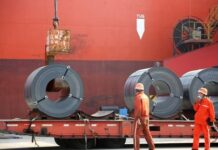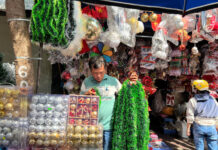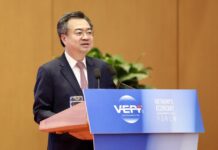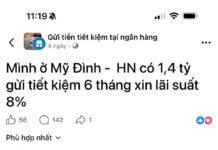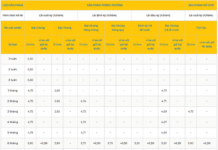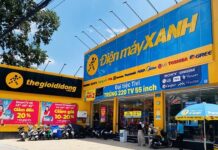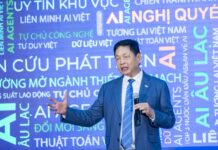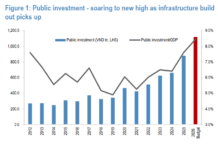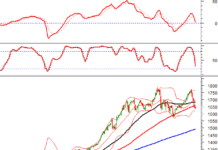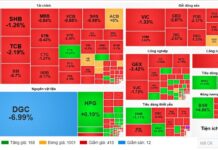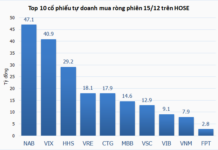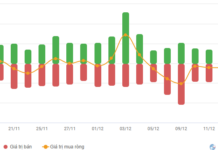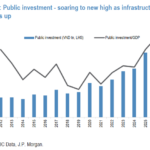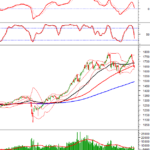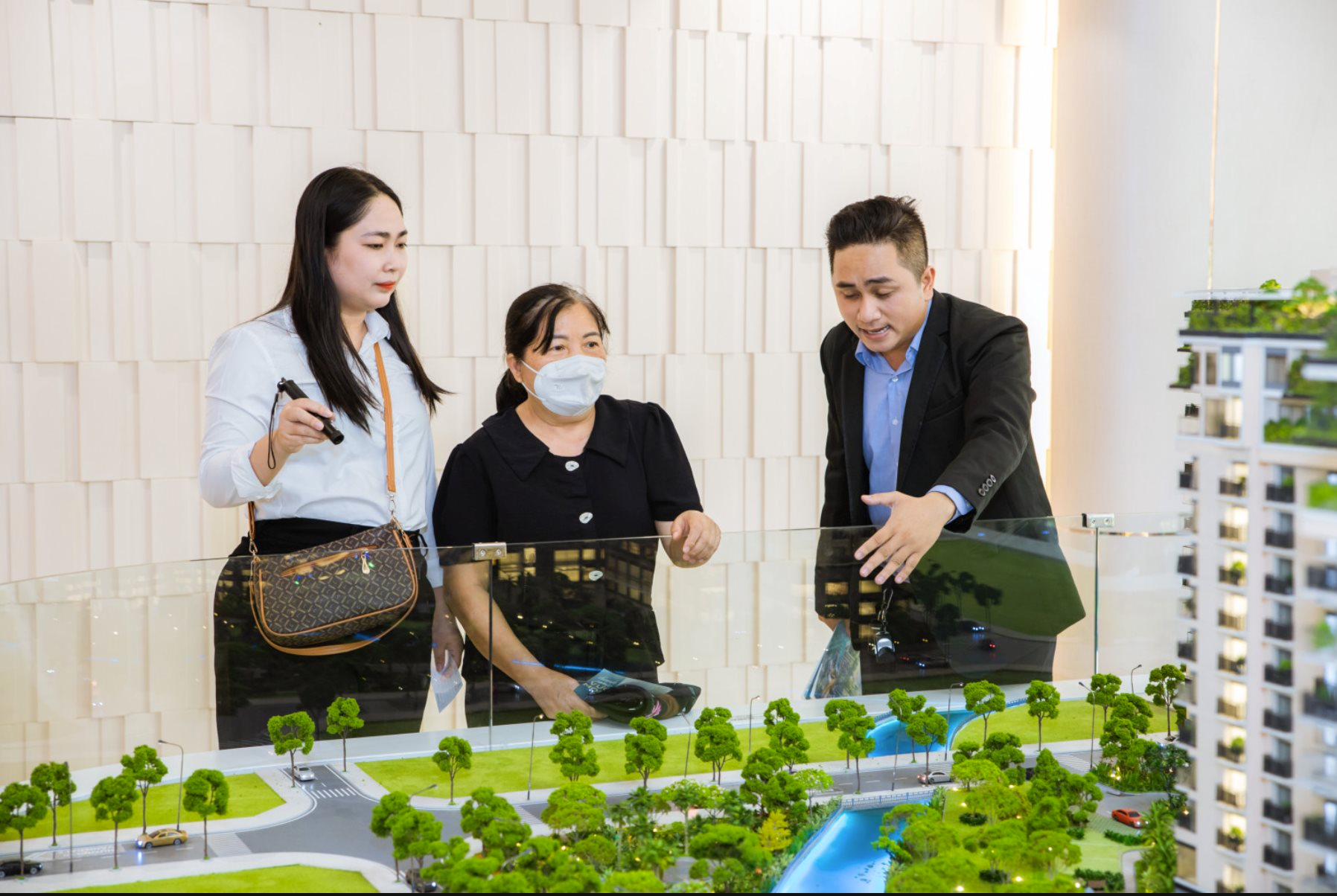
Lực kéo từ metro và đường vành đai
According to CBRE Vietnam, the trend of urban development related to public transport systems (Transit-Oriented Development – TOD) is a model that Ho Chi Minh City has proposed as a key to urban space development and promises to boost real estate around the Metro and Belt Road.
Ho Chi Minh City has planned to pilot the TOD model in the area of Metro station 1 Ben Thanh – Suoi Tien and the intersections of Belt Road 3 and Belt Road 2. These are projects that have already been invested and constructed.
In Ho Chi Minh City, the TOD model is considered particularly suitable for development in Thu Duc City as it has 8 out of 11 elevated railway stations on Metro line 1 Ben Thanh – Suoi Tien. This is the first urban railway project in Ho Chi Minh City and is scheduled to start operating in June 2024, one month after commercial operation.
In addition, this area is being strongly developed with comprehensive public investment planning, such as Belt Road 3, Belt Road 2, Ho Chi Minh City – Dau Giay – Phan Thiet expressway, My Thuy intersection, Cat Lai bridge, and projects connecting Ho Chi Minh City with other regions such as Ben Luc – Long Thanh expressway, Bien Hoa – Vung Tau expressway, Long Thanh International Airport, etc.
Furthermore, the specific feature of the most suitable area for TOD planning is a convergence of various types of housing, office, services, and infrastructure. Therefore, in recent years, many high-rise apartment projects have appeared in areas connected to metro stations in Thu Duc City, attracting the attention of customers and investors.
As of now, there are 10 urban areas in Thu Duc City, Ho Chi Minh City, planned along Metro line 1 (Ben Thanh – Suoi Tien), forming new development centers. Metro line 1, with a total investment of over 43,000 billion VND, has completed 95% of the progress and will operate from the beginning of 2024.
Meanwhile, Belt Road 3 is an important transportation project in the TOD urban model. It is a national key transportation project, with a length of 76 km, passing through 4 provinces and cities, with a total investment of nearly 75,400 billion VND. By early 2024, according to the Project Management Board of Ho Chi Minh City’s transportation construction projects (Transportation Management Board), the section of Belt Road 3 passing through Ho Chi Minh City is focusing on equipment, human resources, materials, and pushing forward the construction progress to ensure the project’s schedule. Belt Road 3 will be put into operation by 2026.
Not long ago, the People’s Committee of Ho Chi Minh City submitted to the People’s Council of Ho Chi Minh City a decision on investment policy for the construction project of Belt Road 2, from Phu Huu bridge to Vo Nguyen Giap street, with a budget of 9,328 billion VND from the city’s budget. Belt Road 2 is an important route of Ho Chi Minh City connecting industrial zones, urban areas, and cross-axis roads to reduce traffic load in the inner city and connect regional traffic. According to Ho Chi Minh City, closing Belt Road 2 is extremely necessary and needs to be implemented immediately to solve the transportation of goods through ports in the East, Northeast, and South of the city, such as Cat Lai Port, Phu Huu Port, etc.
Thị trường bất động sản hưởng lợi?
According to the survey, along Metro line 1 (Ben Thanh – Suoi Tien) and Belt Road 2, Belt Road 3, many real estate projects with large scale have been attracted, such as Vinhomes Grand Park urban area, FIATO Premier, The Madison, Saigon Luxury, City Garden, Sunwah Pearl, Saigon Pearl, The Manor, Thao Dien Pearl, Masteri Thao Dien, Masteri An Phu, Gateway Thao Dien, Lavita Garden, Saigon Gateway, etc.
However, currently, the distribution of these apartment projects is uneven in Thu Duc District – the multifunctional connecting area with TOD. While districts 9 and 2 (old) have many projects joining the market, Thu Duc District (old) in the northwest of East Ho Chi Minh City is scarce with new apartments. One of the rare projects is FIATO Premier (developed by Thang Long Real Group). This project is located on To Ngoc Van Street, Tam Phu Ward, Thu Duc City and has the ability to directly connect to the city center and surrounding areas through Pham Van Dong Avenue, Belt Road 2, Metro Ben Thanh – Suoi Tien, and also connects with existing and vibrant residential areas.
The operation of Metro line 1 has been shown to reshape the real estate market in East Ho Chi Minh City. Statistics from 2016 to now, there have been more than 30 residential and busy commercial center projects along this metro line. Opening prices in the period 2012-2016 increased significantly, about 150-200% compared to other areas. Today, existing projects along the line have also increased from 15-50% compared to the initial selling price in a few years.
According to Mr. Vo Huynh Tuan Kiet, Director of the Housing Marketing Department at CBRE, in the Southern region, belt roads and expressways will create a trend of developing decentralized urban areas. Belt road systems will have a clear impact on the “changing the skin” of the real estate market. The trend of investing in infrastructure-driven real estate development is not new but will be a driving force for real estate businesses. Because breakthroughs in infrastructure are the springboard to increase value and liquidity for TOD projects through the developed transportation infrastructure network.
It is clear that TOD is not only a solution to implement modern urban planning but also a lever to help the real estate market establish a new value platform. It reduces costs, travel time, improves employment opportunities, and increases the price of commercial real estate such as offices and retail.

